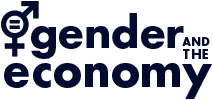Highlights
- Increasing women’s representation in senior management can boost a firm’s external reputation. However, firms that view themselves as diversity leaders often reduce internal efforts to support junior women.
- This reduced focus on inclusive practices can lead to fewer job offers for early-career women.
- Representation alone does not guarantee equity—especially if women lack power in decision-making roles. Empowering women through roles on hiring and diversity committees helps sustain equitable progress.
Organizations across industries are under pressure to increase the number of women in leadership roles. But what happens after a company meets this expectation? New research by Priyanka Dwivedi and Lionel Paolella reveals an unintended consequence: in men-dominated industries, firms that appear to be leaders in senior-level gender diversity compared to their peers often stop investing in internal diversity practices. As a result, they end up offering fewer jobs to junior women.
The diversity paradox
The study explores what the authors call a “diversity paradox:” the perception of success at the top level can reduce the urgency to act elsewhere in the organization. When firms have more senior women than the industry average, leaders often believe they’ve done enough to address gender equity. This perception of progress leads to a drop in attention and resources devoted to diversity efforts lower down the hierarchy. In practice, this means that hiring managers may stop prioritizing gender-diverse applicant pools or fail to adopt inclusive hiring practices, reducing opportunities for early-career women.
When firms have more senior women than the industry average, leaders often believe they’ve done enough to address gender equity. This perception of progress leads to a drop in attention and resources devoted to diversity efforts lower down the hierarchy.
Using panel data from the largest U.S. corporate law firms between 2007 and 2015, the researchers find that firms with a higher-than-average share of women in senior management extend fewer job offers to junior women. This effect is explained by a reduction in internal diversity practices, such as targeted recruitment, mentoring, or diversity training. However, when women have substantial representation on diversity and hiring committees, these negative effects are significantly reduced.
The problem isn’t simply that senior women aren’t doing enough. In many of these firms, senior women remain in the minority and may lack the authority, time, or organizational support to drive firm-wide change. Unless these women are given formal roles on decision-making committees, their ability to influence hiring and diversity practices is constrained. Meanwhile, men leaders may overestimate progress and redirect attention to other priorities.
Representation is only part of the equation
This research offers a critical insight for companies striving to improve gender diversity: representation at the top is only part of the equation. True progress requires continuous engagement with internal practices that support women at all levels. Firms that appear ahead of the curve may still fall short in fostering inclusive practices at lower levels. Leaders must resist the temptation to “check the box” and instead commit to ongoing action.
Companies can establish accountability structures that formally include women in decision-making around hiring and diversity. Having women on these committees empowers them to advocate for equity in ways that are recognized and rewarded. Additionally, firms can invest in programs that go beyond surface-level diversity—such as inclusive mentoring, targeted outreach to women candidates, and internal assessments that identify where systems may still disadvantage women.
Leaders must resist the temptation to “check the box” and instead commit to ongoing action.
Managers across the organization can also be reminded that progress in one area does not mean the work is done. Equity efforts should be seen as part of a long-term commitment to fairness, culture change, and sustained inclusion, requiring attention, resources, and leadership buy-in at all levels.
______
Research brief prepared by:
Title
Tick Off the Gender Diversity Box: Examining the Cross-Level Effects of Women’s Representation in Senior Management
Author
Priyanka Dwivedi and Lionel Paolella
Source
Academy of Management Journal
Published
2024
Link
https://doi.org/10.5465/amj.2021.0506







